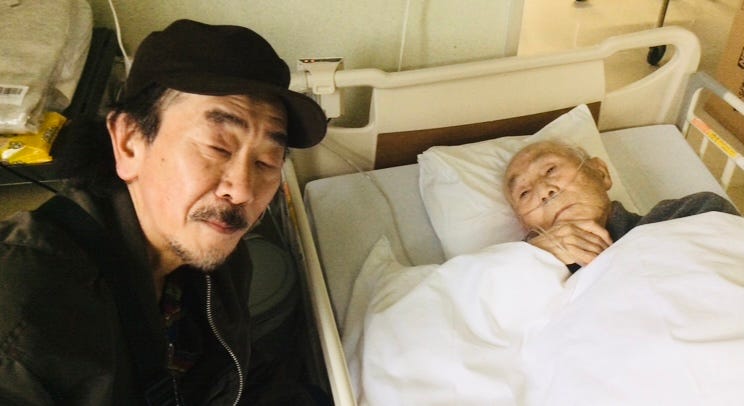A Japanese Funeral Service
The most disconcerting thing about a Japanese funeral, for foreigners to comprehend, becomes apparent when the time comes to handle the charred bones of the recently deceased.

I attended one of these functions when my Japanese father-in-law Teruo died in 2017. A likeable man, who spoke very little, Teruo was a Second World War veteran. I was sorry to see him go, but at the venerable age of ninety-four years, I realised his time had come.

Teruo’s son’s reaction to the passing of their father was pragmatic. My husband, who was sixty years old at the time, comes from a culture with an understandably resigned attitude to the passing of time and its inevitable conclusion.

On the day of Teruo’s funeral, I was at the ceremony with my husband. We arrived at the wake the night before. The wake and the funeral were being held in Kobe. Our aeroplane landed in Osaka at around 8:00 PM. By the time our commute to Kobe was over, it was late evening.
The vigil began around 10:00 PM. In a display of sincere affection, my husband and his brothers greeted one another magnanimously. As they reminisced about their youth and shared memories of their father, the camaraderie between the brothers intensified. A copious amount of alcohol was ingested by the brothers during the wake, which ensured that the night of honouring the Late Teruo went well into the night, and into the early hours of the morning.
The next morning the funeral service began at 9:00 AM, with a Buddhist priest chanting for over two hours. An hour into the Buddhist recital, it occurred to me that I needed to use the restroom, but with no way of knowing when the chanting would cease, I ignored the call of nature. As the chanting continued, the incineration of late Teruo’s remains was taking place in the furnace next door.

Teruo’s three sons and their wives were eventually gathered in the cremating room, where Teruo’s charred bones were presented to us along with what looked like a set of very long chopsticks. We were instructed to collect the bones in turns, starting with the first-born son, his wife, the second-born son (a bachelor), and lastly the third-born son and his wife, which was me. After placing Tero’s remains in an urn, we were ushered into a dining room, where the extended family members were seated.

After the meal, everybody scattered, as they rushed to commute back to their respective homes, and goodbyes were significantly briefer than the initial greetings had been.
It was an honour to be included in this exclusive, ancient ceremony and an unforgettable experience. As one doesn’t want anyone’s loved ones to pass, regardless of the uniqueness of the event, a Japanese funeral is a rare occurrence that one cannot wish on anyone.
As the years go by, I find myself thinking that the funeral service helped cement my relationship with my husband.

The intimacy of the handling of the charred bones of my Late father-in-law Teruo, was a ritual that to my husband and me is a reminder of the importance of the promise of our commitment to one another and the longevity of our marriage.




Comments
Post a Comment